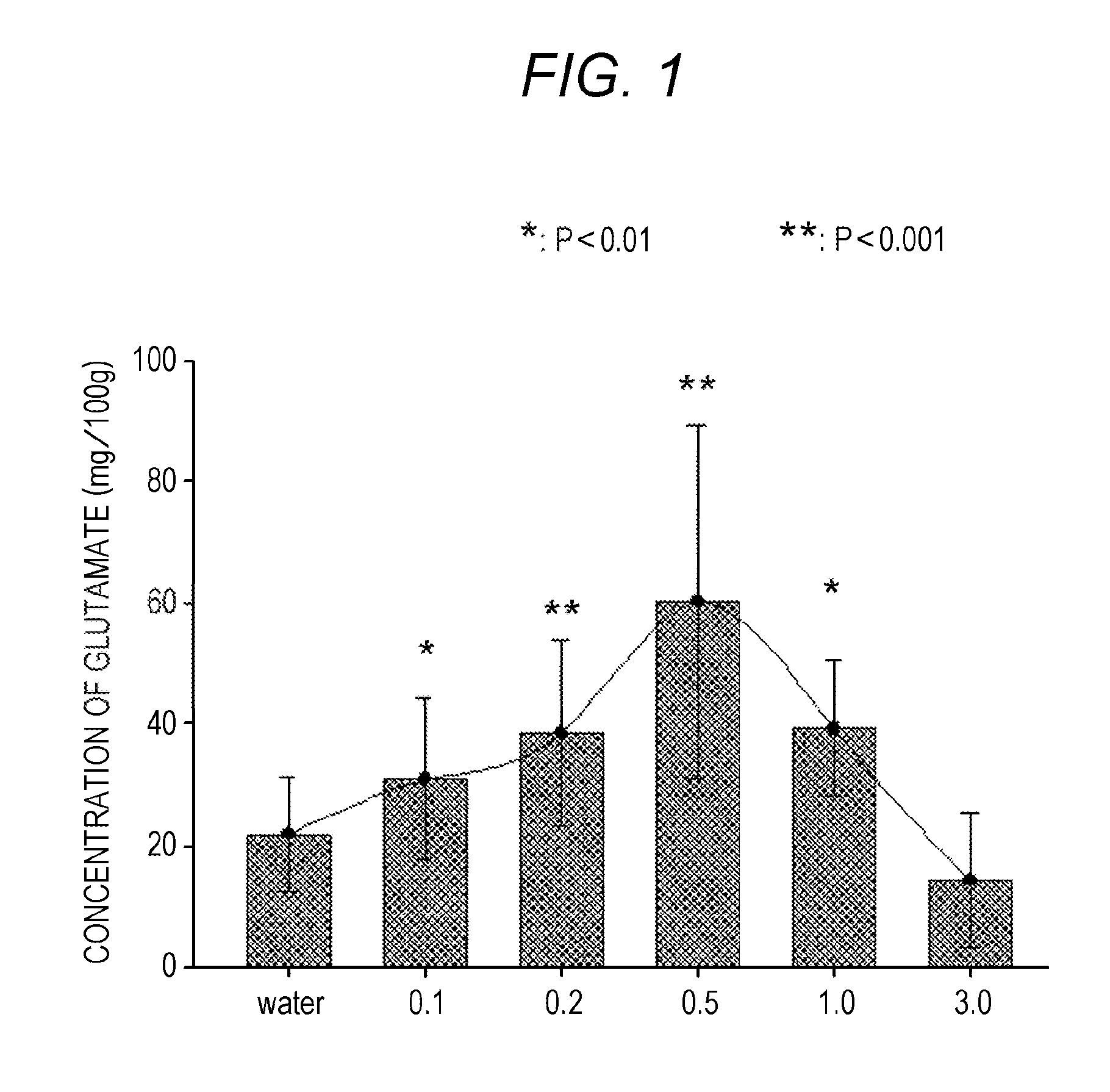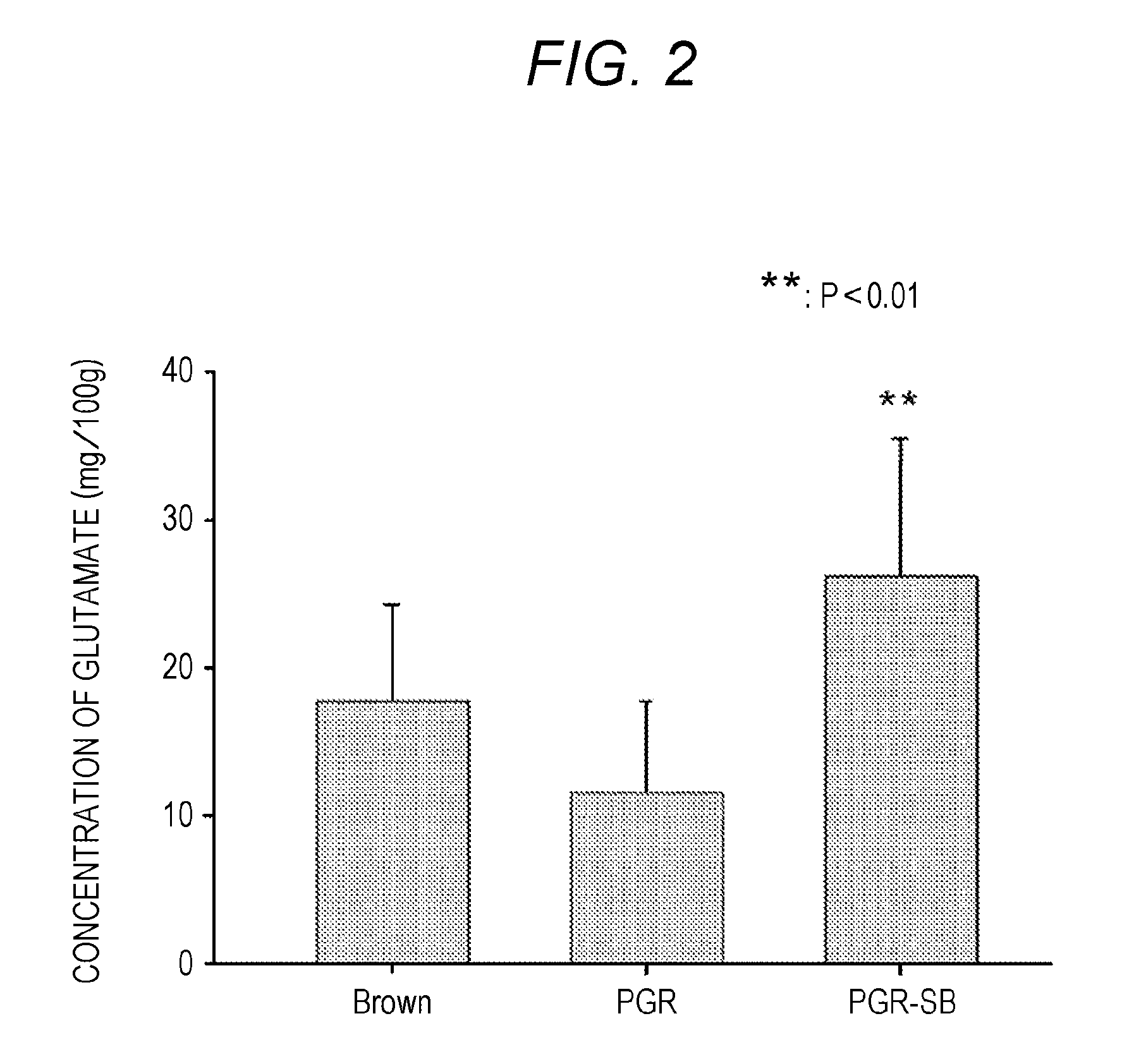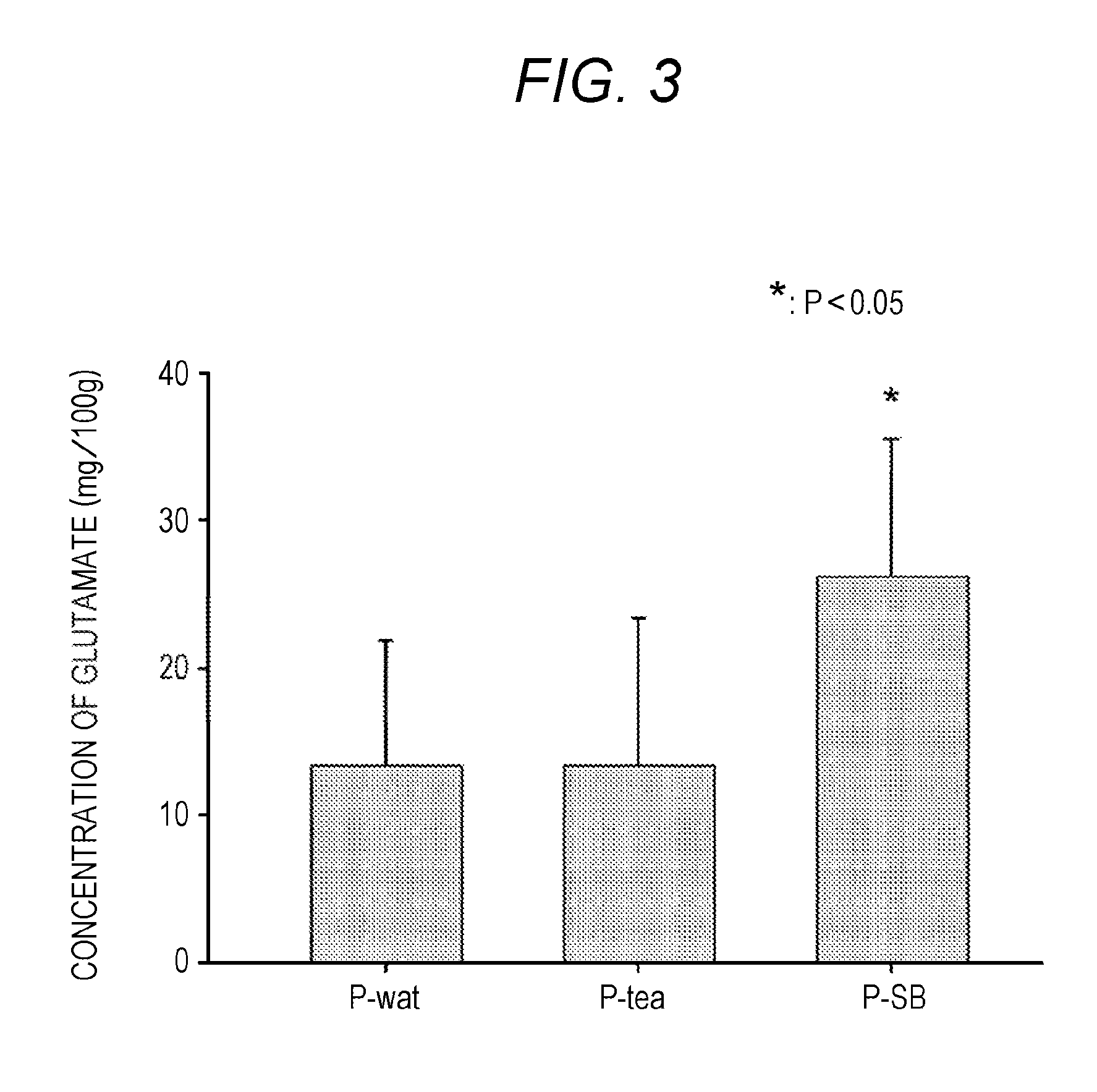Sprouted cereal, method for manufacturing same, food product containing same, and bdnf production accelerator
- Summary
- Abstract
- Description
- Claims
- Application Information
AI Technical Summary
Benefits of technology
Problems solved by technology
Method used
Image
Examples
example 1
Production of Sprouted Brown Rice Using Aqueous Sodium Bicarbonate Solution
[0095]Aqueous sodium bicarbonate solutions (pH 8.0 to 1.0 at room temperature) were prepared by dissolving predetermined amounts of edible sodium bicarbonate powder in amounts of 0.1, 0.2, 0.5, 1.0, and 3.0 mass % (i.e., hydrogen carbonate ion levels of 0.012, 0.024, 0.06, 0.12, and 0.36 mol / l) in five liters of water. Brown rice harvested by a farmer in Mino city (Osaka, Japan), 2 kg, was immersed in each of the resulting solutions and water of equivalent volume for 24 hours (i.e., water-absorption process). Subsequently, the brown rice was collected from the solution or the water, and then placed on and wrapped by disposal paper towel (Kimtowel®) moist with the solution or the water in a metal tray in a room at 25° C. Thus, the brown rice was in contact with both air and moisture at room temperature, thereby keeping its wet condition (i.e., germination process). The germination process was terminated when t...
example 2
Production of Sprouted Barley, Sprouted Wheat, Sprouted Kin-Goma, Sprouted Black Bean, Sprouted Soybean
[0105]Sprouted barley, sprouted wheat, sprouted Kin-Goma, sprouted black bean, and sprouted soybean of interest were obtained by almost the same manner as that of Example 1, except that barley (Shunrai), wheat, Kin-Goma (golden sesame), black bean, and soybean were used instead of the brown rice and they were germinated using a the aqueous solution of 0.2-mass % sodium bicarbonate (0.024 mol / l in hydrogen carbonate ion concentration) and using pure water as control.
[Evaluation 4]
Glutamate Content Measurement 4
[0106]The glutamate contents of the sprouted barley, sprouted wheat, sprouted Kin-Goma, sprouted black bean, and sprouted soybean generated using the aqueous sodium bicarbonate solution and the pure water, which are obtained in Example 2, were measured by the above measurement method, respectively. The results are shown in FIG. 4.
[0107]As is evident from the results in FIG. 4,...
PUM
 Login to View More
Login to View More Abstract
Description
Claims
Application Information
 Login to View More
Login to View More - R&D
- Intellectual Property
- Life Sciences
- Materials
- Tech Scout
- Unparalleled Data Quality
- Higher Quality Content
- 60% Fewer Hallucinations
Browse by: Latest US Patents, China's latest patents, Technical Efficacy Thesaurus, Application Domain, Technology Topic, Popular Technical Reports.
© 2025 PatSnap. All rights reserved.Legal|Privacy policy|Modern Slavery Act Transparency Statement|Sitemap|About US| Contact US: help@patsnap.com



